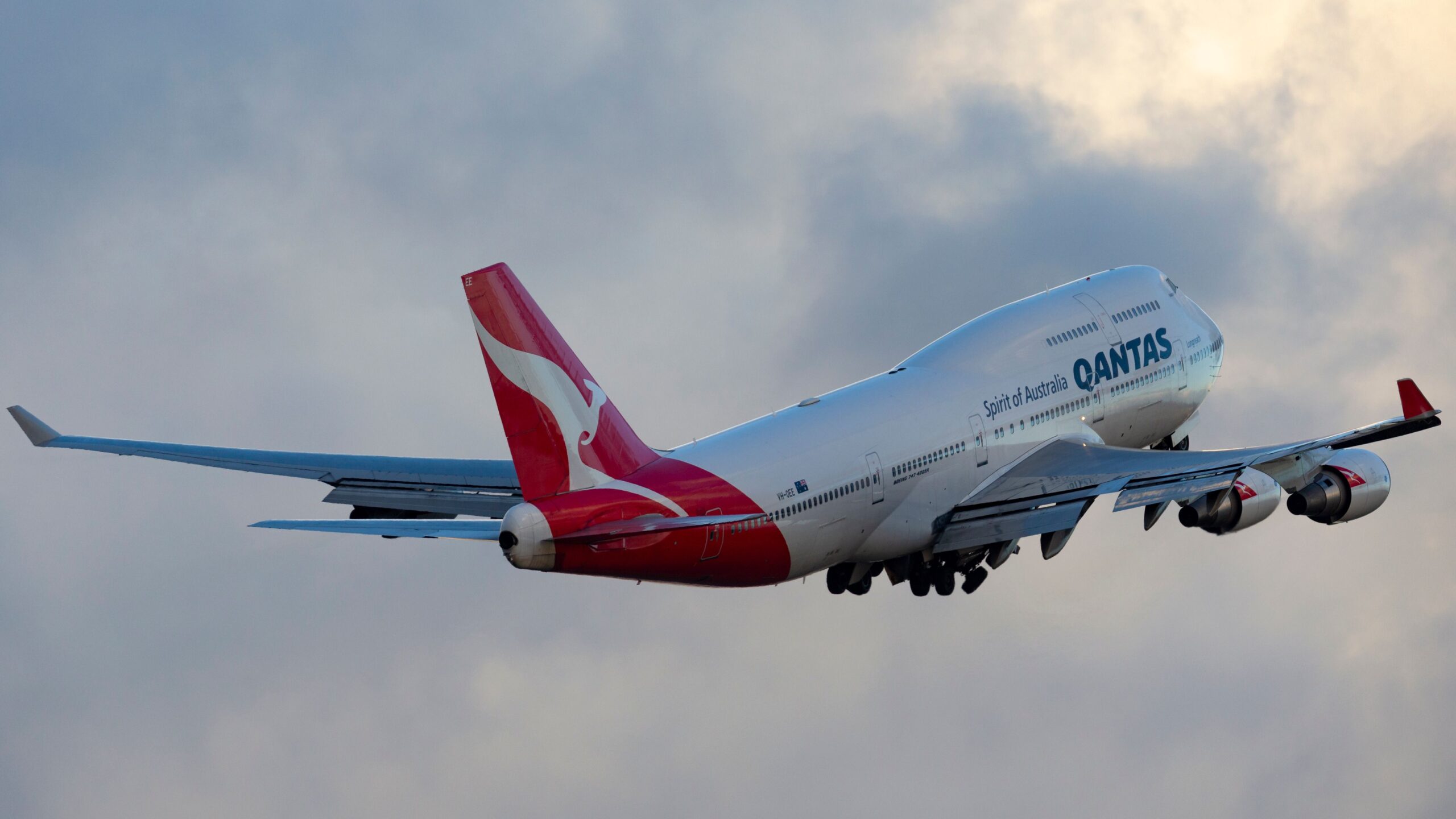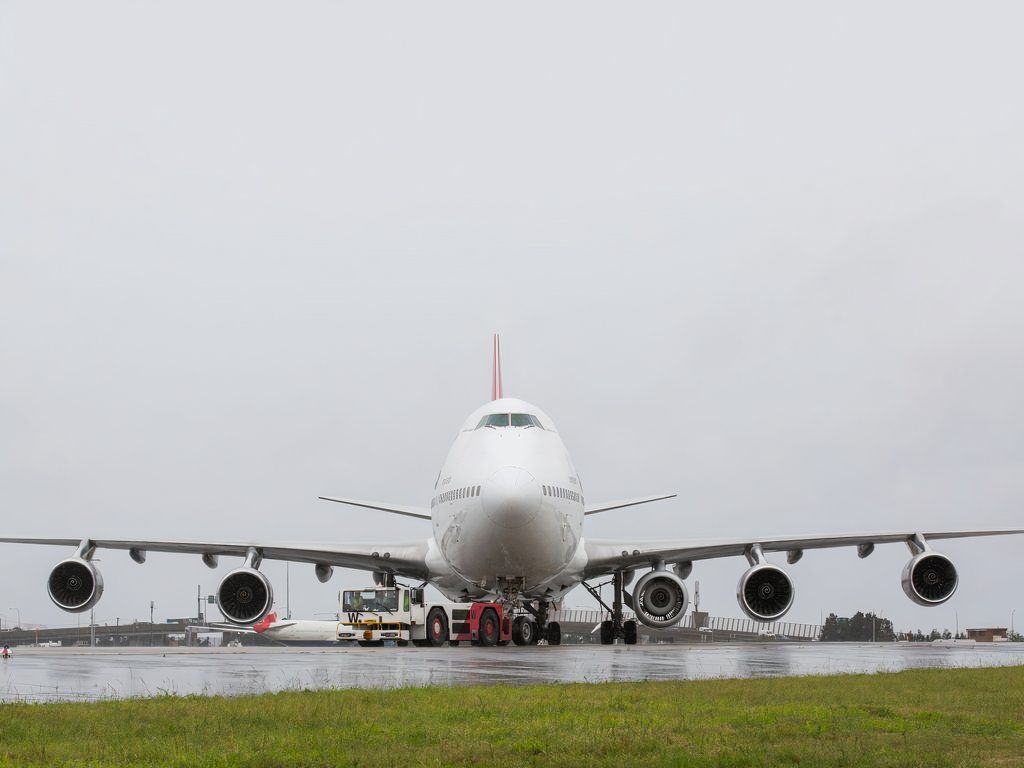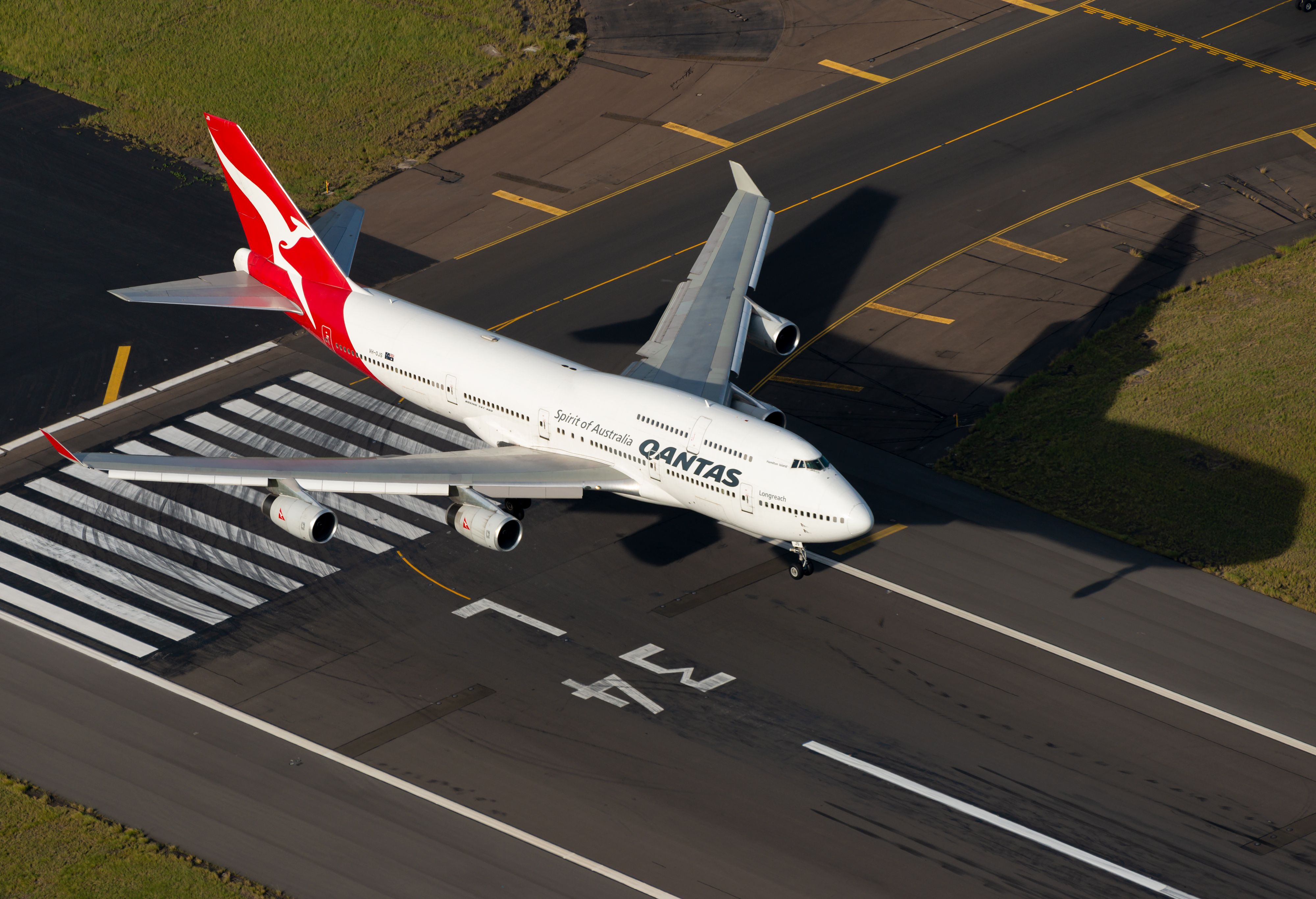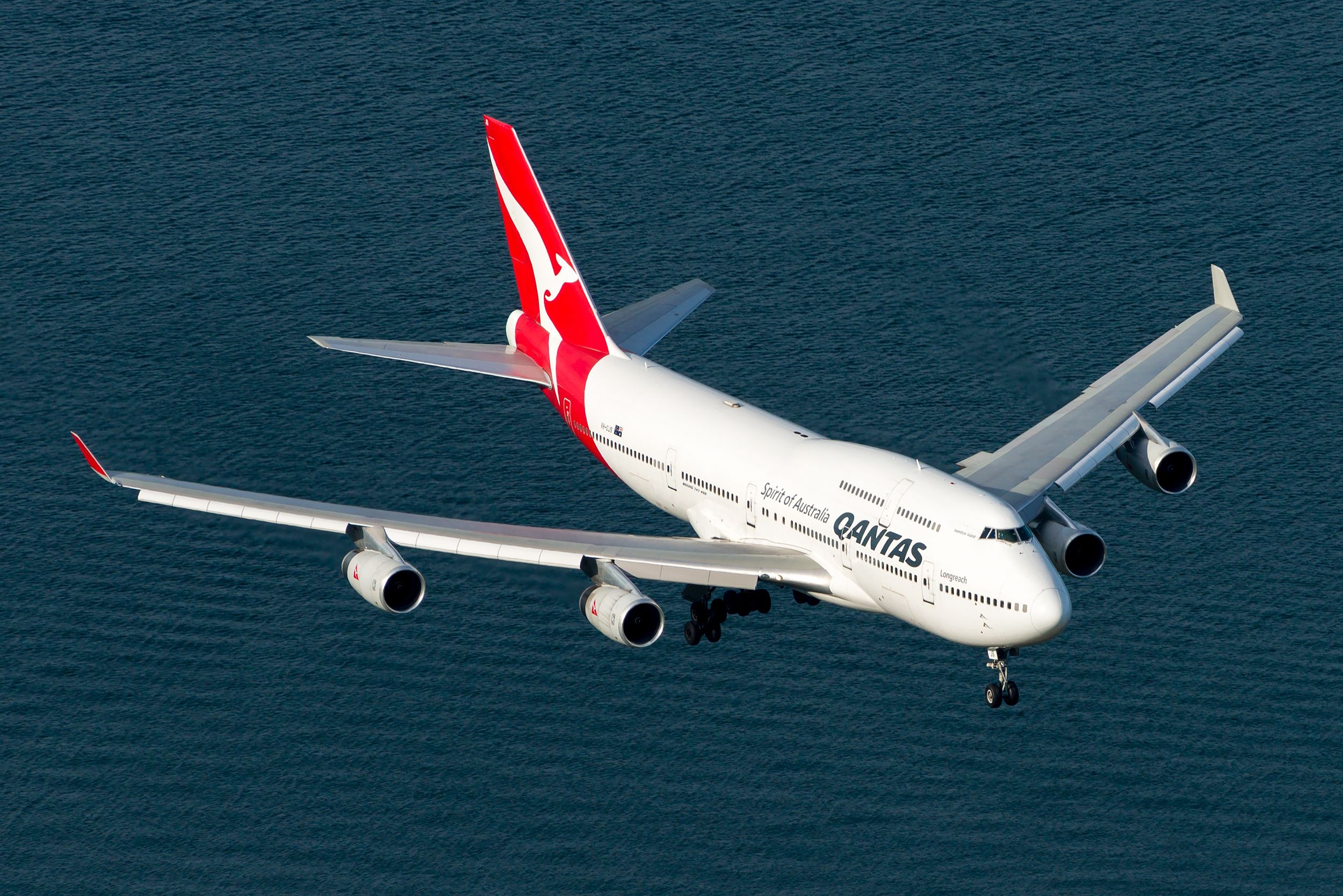Summary
- Qantas flew a 747 with 5 engines carrying a large spare part from Sydney to Johannesburg in 2016.
- The Boeing 747’s design allowed for a supporting strut to attach various items such as a spare engine.
- The spare engine was essential to getting a grounded 747 back in the skies.
The Boeing 747 played a monumental role in developing Australian aviation, making international travel more accessible for millions of people. The ‘Queen of the Skies’ served Qantas for nearly 50 years. While the type primarily carried passengers and essential cargo, one 747 once flew across the Indian Ocean with a spare engine.
A Boeing 747 with five engines
On January 6, 2016, a Qantas Boeing 747 operating flight QF63 departed Sydney Kingsford Smith Airport (SYD) with an extra six-tonne Rolls-Royce engine. The jumbo was spotted in a rather unusual configuration with two engines on one side and three on the other. The aircraft was destined for Johannesburg OR Tambo International Airport (JNB), where another aircraft was awaiting engine replacement.
Photo: Qantas
The 747 had many groundbreaking capabilities, including carrying a fifth engine fitted between the fuselage and the innermost engine on the port (left) side of the aircraft. However, the spare engine was not powered for flight QF63. Qantas was essentially ferrying a large and heavy spare part from its engineering headquarters in Sydney to Johannesburg.
Of course, in a time of extensive research and development into new engine technology, an aircraft with strange engine configurations is not a new phenomenon. Indeed, Airbus and Boeing are known to add a different engine to testbed aircraft. Boeing, for example, tested the new GE9X on a 747 before installing it onto its new 777X.
Why did Qantas fly the fifth engine out?
According to Qantas, a broken Rolls-Royce engine had stranded one of its Boeing 747s in South Africa. The Australian flag carrier had plenty of spare parts back in Sydney and thus didn’t need to go through the trouble of sourcing locally. However, shipping a spare engine over to South Africa would cost time and, subsequently, more money.
Photo: Thiago B Trevisan | Shutterstock
After all, having a 747 stuck on the ground abroad, not operating any flights, is a costly proposition. As such, Qantas could not afford to wait. However, the spare powerplant was too big to fit in the cargo hold of a typical aircraft. Instead of chartering a freighter aircraft, Qantas strapped it onto one of its passenger 747s.
Sending spare parts by sea would also have been extremely time-consuming. Indeed, this was a catalyst for Boeing’s decision to construct the Boeing 747 Dreamlifter. This reduced shipping times from Japan to the US from a month to nine hours. The Dreamlifter has played an important role in the production of the 787 Dreamliner.
Flying a Boeing 747 with five engines
Thanks to the Boeing 747’s design, anchor points under the wing allow the addition of a supporting strut to attach various objects, such as a spare engine. The strut is fitted with a winching mechanism, allowing the engine to be hoisted up and secured safely for the entire flight.
The fifth engine is not connected to the aircraft’s systems, so it cannot provide additional power. However, its presence does impact how the plane flies. The extra engine has the following effects on the aircraft.
- Aircraft becomes unbalanced: Pilots have to compensate for the skewed weight distribution.
- Increased drag: The extra engine adds drag to one side of the plane. Consequently, pilots have to adjust the power on the other side to compensate.
- Additional weight: The special cargo made the aircraft heavier and required additional stops. This particular trip between Sydney and Johannesburg involved a fuel stop in Perth.
Photo: Thiago B Trevisan | Shutterstock
Once the aircraft landed in Johannesburg, the fifth engine was detached and installed on the grounded Boeing 747. Both jets were able to fly back home to Australia. The broken engine was shipped back to Sydney by sea. From its pioneering days to its latter years, the 747 has long been trusted for its versatility.
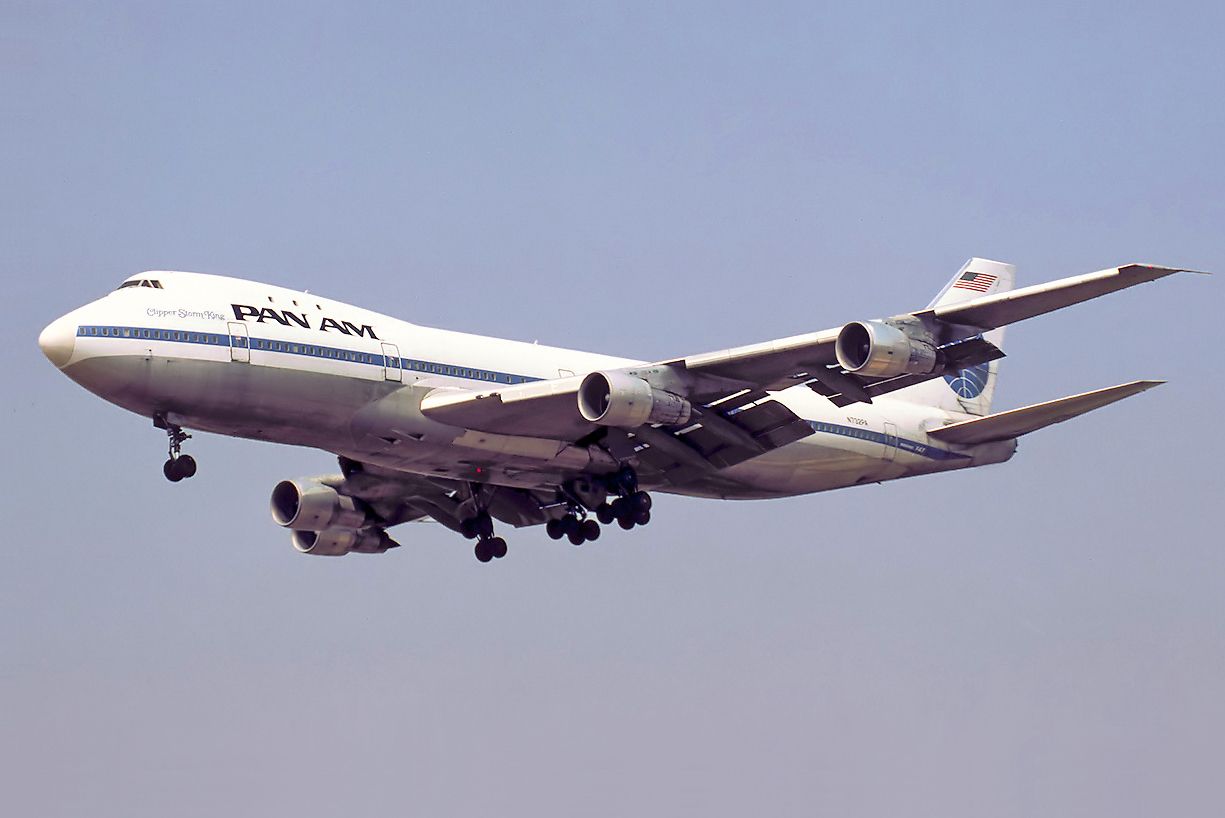
Related
Boeing Once Considered A 747 Fighter Jet Carrier
A look back at why the US military explored such a design.
Unfortunately for jumbo jet lovers, Qantas retired its Boeing 747 fleet nearly four years ago. The last 747 departed Australia in July 2020, marking the end of nearly five decades of transforming Australian aviation. Qantas paid a wonderful tribute to the ‘Queen of the Skies’ by leaving a special sign in the sky. The final flight (QF747) traced the iconic Qantas kangaroo logo before making its way across the Pacific to the US.
Another Boeing 747 with five engines in Johannesburg
While QF63 in 2016 was a special moment for everyone involved, this was not the first time a Boeing 747 flew to Johannesburg with five engines. In 1971, South African Airways took delivery of its first Boeing 747, registration ZS-SAN, with a fifth engine directly fitted from the factory. At the time, there were no spare engines for the aircraft in South Africa or a cargo plane that could easily carry a fully assembled 747 engine to the point where it was needed.
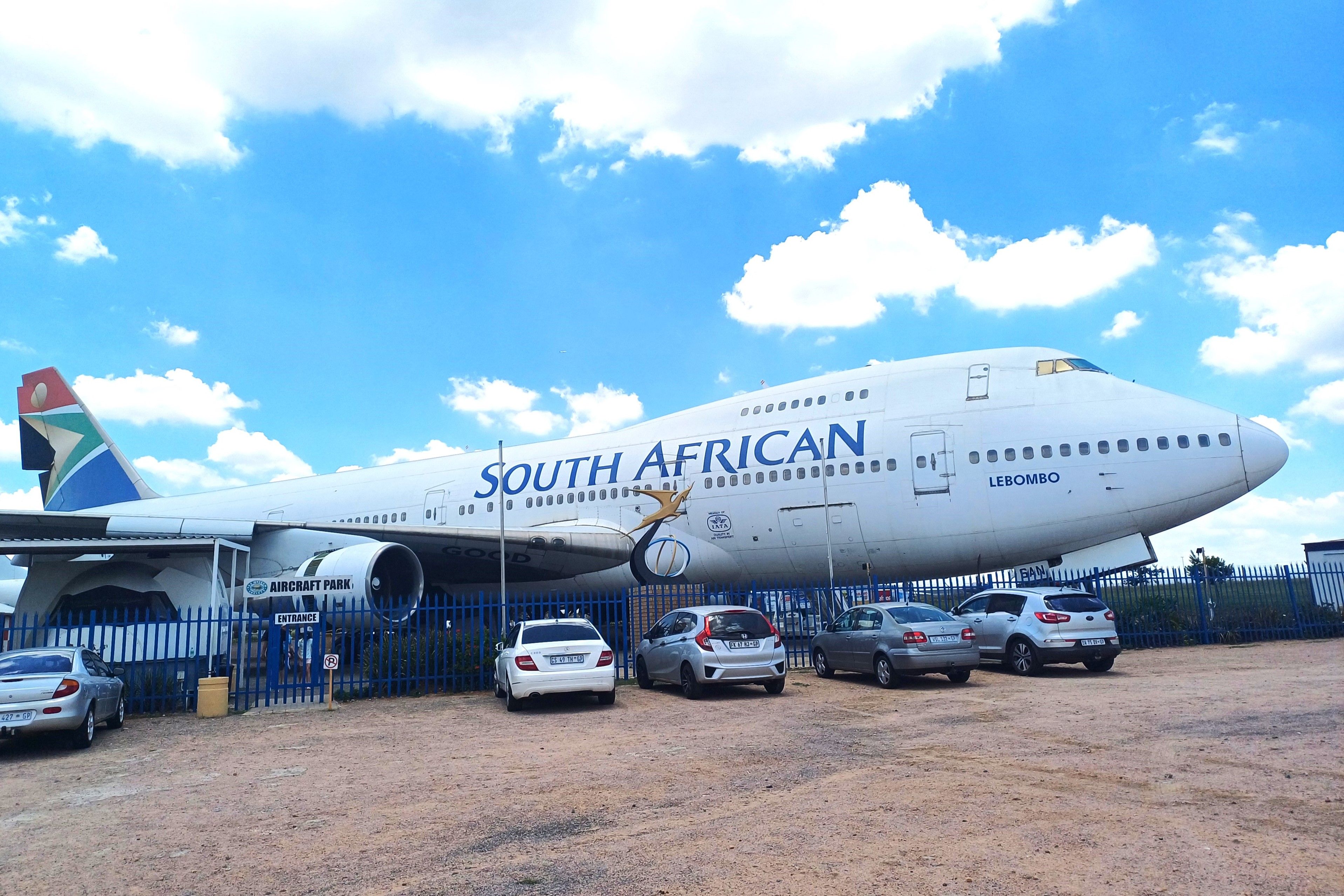
Related
90 Years Old: South African Airways Celebrates A Milestone
Looking at the aircraft SAA has operated and where they are now.
The aircraft, nicknamed Lebombo, is now parked at the South African Airways Museum Society in Johannesburg. It is on display with a fifth engine attached to the left wing. It played an important role in South African Airways’ history, flying over Ellis Park the day the Springboks won their first Rugby World Cup trophy.
What are your thoughts about the five-engine Boeing 747s? Let us know what you think in the comment section.

